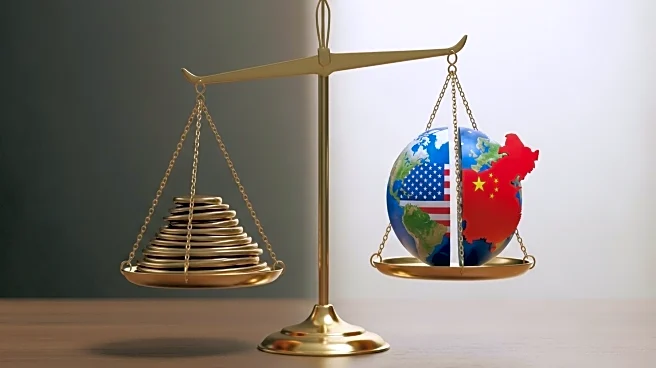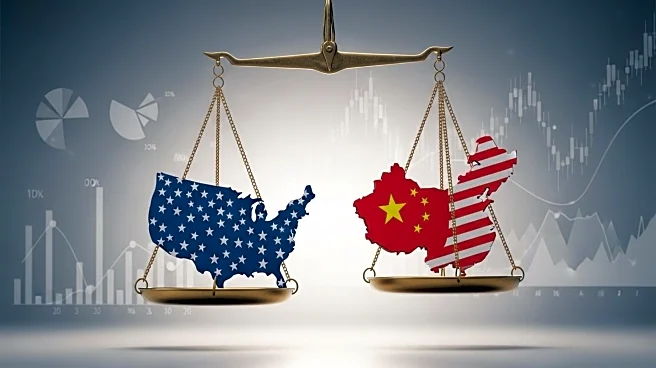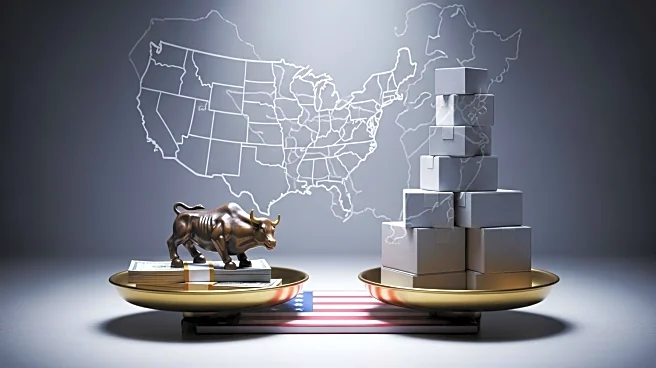What's Happening?
President Trump announced a new 100% tariff on Chinese imports, set to begin next month, in response to China's recent export controls on rare earth elements. These tariffs will add to the existing 30% import taxes on Chinese goods. The decision follows China's implementation of rules requiring special approval for exporting products containing rare earths, which are crucial for manufacturing semiconductors, electric car batteries, and defense weapons. The announcement has already impacted major stock indexes, with the S&P 500, Dow Jones Industrial Average, and Nasdaq Composite experiencing significant drops. The tariffs could be imposed as early as November 1, depending on China's actions.
Why It's Important?
The escalation in tariffs marks a significant intensification in the ongoing U.S.-China trade war, potentially affecting various sectors reliant on Chinese imports, including technology and manufacturing. The move could lead to increased costs for U.S. companies and consumers, as well as further strain diplomatic relations between the two nations. The U.S. imports a substantial amount of goods from China, and the new tariffs could disrupt supply chains and impact economic growth. Additionally, the decision may influence upcoming trade negotiations between President Trump and Chinese President Xi Jinping, with potential repercussions for global trade dynamics.
What's Next?
President Trump is scheduled to meet with Chinese President Xi Jinping later this month, although he has expressed doubts about the necessity of the meeting. The new tariffs and export restrictions could complicate these discussions, potentially leading to further retaliatory measures from China. Stakeholders in the U.S. and China will likely monitor the situation closely, as any changes in trade policy could have widespread implications for international trade and economic stability.
Beyond the Headlines
The imposition of tariffs and export controls highlights the strategic importance of rare earth elements in global manufacturing and defense industries. The U.S. may need to explore alternative sources for these materials or invest in domestic production capabilities to mitigate reliance on Chinese exports. This development also underscores the broader geopolitical tensions between the U.S. and China, with potential long-term impacts on international relations and economic policies.










